
Saint-Sauveur: A Hidden Gem in Quebec City
Discover Saint-Sauveur in Quebec City: A blend of historic charm, vibrant culture, and culinary delights, perfect for an authentic Quebecois experience.
Saint-Sauveur, nestled in the heart of Quebec City, is a delightful blend of old-world charm and modern vibrancy. Known for its rich history and cultural diversity, this neighborhood offers an authentic Quebecois experience. As you wander through its quaint streets, you'll encounter a mix of historic architecture and contemporary art, reflecting the neighborhood's dynamic spirit. Saint-Sauveur is home to a plethora of local eateries and cafes, each offering a taste of Quebec's culinary heritage. From poutine to artisanal pastries, food lovers will find themselves in a gastronomic paradise. The neighborhood's vibrant markets are perfect for those who wish to sample fresh, local produce and handmade goods. For history enthusiasts, Saint-Sauveur provides a glimpse into Quebec City's past with its well-preserved buildings and informative plaques. The neighborhood's parks and green spaces offer a peaceful retreat from the hustle and bustle, making it an ideal spot for leisurely strolls. Throughout the year, Saint-Sauveur hosts various cultural events and festivals, ensuring that there is always something exciting to see and do.
Local tips in Saint-Sauveur
- Visit the local markets early in the morning to enjoy the freshest produce and baked goods.
- Don't miss out on the neighborhood's annual festivals, which showcase local music, art, and cuisine.
- Take a leisurely walk through the parks and green spaces for a serene escape from the city's bustle.
- Explore the historic architecture and informative plaques to gain insight into the neighborhood's rich history.
Saint-Sauveur: A Hidden Gem in Quebec City
Saint-Sauveur, nestled in the heart of Quebec City, is a delightful blend of old-world charm and modern vibrancy. Known for its rich history and cultural diversity, this neighborhood offers an authentic Quebecois experience. As you wander through its quaint streets, you'll encounter a mix of historic architecture and contemporary art, reflecting the neighborhood's dynamic spirit. Saint-Sauveur is home to a plethora of local eateries and cafes, each offering a taste of Quebec's culinary heritage. From poutine to artisanal pastries, food lovers will find themselves in a gastronomic paradise. The neighborhood's vibrant markets are perfect for those who wish to sample fresh, local produce and handmade goods. For history enthusiasts, Saint-Sauveur provides a glimpse into Quebec City's past with its well-preserved buildings and informative plaques. The neighborhood's parks and green spaces offer a peaceful retreat from the hustle and bustle, making it an ideal spot for leisurely strolls. Throughout the year, Saint-Sauveur hosts various cultural events and festivals, ensuring that there is always something exciting to see and do.
Iconic landmarks you can’t miss
Dufferin Terrace
Explore the enchanting Dufferin Terrace in Quebec City, a historical landmark offering stunning views, rich heritage, and vibrant local culture.

Durocher Park
Discover the tranquility of Durocher Park, a lush urban oasis in Québec City perfect for relaxation, recreation, and cultural experiences.

The Mausoleum of Louis-Joseph de Montcalm
Explore the Mausoleum of Louis-Joseph de Montcalm, a captivating historical landmark in Quebec City, rich in history and architectural beauty.

St. Sauveur Catholic Church
Experience the tranquility and beauty of St. Sauveur Catholic Church in Quebec City, a historic landmark filled with artistry and spirituality.

General James Wolfe Monument
Discover the historical significance of the General James Wolfe Monument in Québec City, a tribute to military heritage amidst beautiful scenery.

Le Saint-Sô
Experience the charm of Le Saint-Sô, a captivating apartment building in the heart of Québec City, where culture meets comfort.

Monument des Braves
Explore the Monument des Braves, a historical landmark in Quebec City that honors soldiers, blending history with serenity in beautiful surroundings.

Québec, Printemps 1918
Discover the tranquility and historical significance of Québec's Printemps 1918 Memorial Park, a perfect spot for reflection and relaxation.

Placette Saint-Sauveur
Explore the serene beauty of Placette Saint-Sauveur, a delightful park in the heart of Québec City, perfect for relaxation and cultural experiences.

L’Oasis Saint-Malo
Discover L’Oasis Saint-Malo, a tranquil park in Quebec City, where lush gardens and vibrant culture create the perfect serene escape.

St-Sauveur
Discover the charm of St-Sauveur in Québec City, a lively bus stop connecting you to the rich history and vibrant culture of this beautiful destination.

Unmissable attractions to see
The Citadelle of Québec
Explore the Citadelle of Québec, a historic fortress and museum offering breathtaking views, rich military history, and a glimpse into Canada's past.

Escalier Casse-Cou (Breakneck Steps)
Explore the breathtaking Escalier Casse-Cou in Quebec City, where history meets stunning views in an unforgettable experience.

Saint-Louis Forts and Châteaux National Historic Site
Immerse yourself in Canada's history at the Saint-Louis Forts and Châteaux National Historic Site, a captivating landmark in Quebec City.

Monument des Braves
Discover the Monument des Braves in Quebec City, a historical landmark that honors the courage and sacrifices of soldiers through stunning architecture and rich stories.

Placette Saint-Sauveur
Discover the peaceful oasis of Placette Saint-Sauveur, a vibrant park in Quebec City perfect for relaxation and cultural exploration.

Essential places to dine
Le Clocher Penché
Experience the fusion of French culinary artistry and local flavors at Le Clocher Penché in Québec City.

Lola 45
Experience culinary excellence at Lola 45 Bistro in Saint-Sauveur - where exquisite flavors meet an inviting atmosphere.
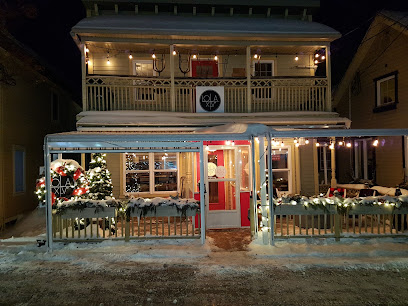
La Cuisine
Discover La Cuisine in Québec City - where deliciously simple food meets cozy charm in a vibrant restaurant-bar setting.

L'Affaire est ketchup
Experience the creative culinary delights at L'Affaire est ketchup in Québec City, where local ingredients meet innovative cuisine.

La Korrigane - Brasserie artisanale
Discover La Korrigane in Québec City: Where Craft Beer Meets Culinary Excellence in a Vibrant Brewpub Atmosphere.

Diner Saint-Sauveur
Experience the vibrant flavors of Quebec at Diner Saint-Sauveur - where grilling meets gourmet in an inviting atmosphere.

Restaurant Le Fin Gourmet
Experience culinary artistry at Restaurant Le Fin Gourmet in Québec City – where French cuisine meets creativity in an inviting atmosphere.

Restaurant La Gueule de Bois
Discover exquisite flavors at Restaurant La Gueule de Bois, Quebec City's premier bistro offering an unforgettable dining experience.

Restaurant Alentours
Savor exquisite culinary creations in the heart of Québec City at Restaurant Alentours - where every meal tells a story.

Restaurant Melba
Experience exquisite dining at Restaurant Melba in Québec City - where local flavors meet culinary excellence.
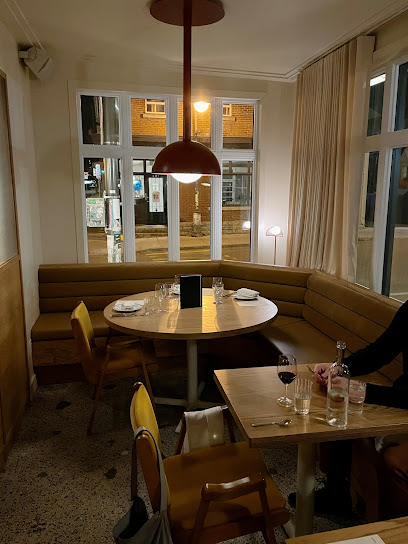
Markets, malls and hidden boutiques
Magasin Général P L Blouin - Gift Shop - Souvenirs - Maple Syrup - Novelty T-Shirts - Record Shop
Discover a charming gift shop in Québec City that offers unique souvenirs, art, and music memorabilia reflecting local culture.

Boutique Lucia F.
Explore Boutique Lucia F. in Québec City for a delightful selection of unique used clothing and sustainable fashion choices.

Boutique Les Sentiers
Explore Boutique Les Sentiers in Québec City for unique gifts and local treasures that capture the essence of Quebec's culture and artistry.

Cuir Indiana
Explore Cuir Indiana, Quebec City's boutique treasure offering exquisite leather goods and a taste of local craftsmanship.

Sarah & Tom - Ville de Québec
Explore the charm of Québec City through unique gifts and local crafts at Sarah & Tom, a must-visit gift shop in La Cité-Limoilou.

Melinoë - Boutique pour sorcières
Discover Melinoë, a unique craft store in Québec City, offering magical supplies and artisan tools for witches and creative souls.

Artefact Depot
Explore Artefact Depot in Québec City for unique gifts and souvenirs that celebrate the local culture and artistry.

Unique Créations Bijoux
Explore Unique Créations Bijoux, a charming handicraft store in Québec City offering exquisite handcrafted jewelry and unique artisan creations.

Katy Artiste Blog
Discover a unique beauty experience at Katy Artiste in Québec City, where expert advice meets high-quality beauty products.

21Tara Clothing
Explore the essence of Quebec fashion at 21Tara Clothing, where unique styles meet local artistry in the heart of Québec City.

Essential bars & hidden hideouts
Griendel - Brasserie Artisanale (quartier Saint-Sauveur)
Experience the vibrant atmosphere and exquisite flavors of Griendel, Québec City's top brewpub offering artisan beers and delicious bistro cuisine.

Bar Le Sacrilège
Discover the lively Bar Le Sacrilège in Quebec City, a hub for locals and tourists with its vibrant atmosphere and extensive drink selection.

Diner Saint-Sauveur
Experience the best of Quebec City’s grill scene at Diner Saint-Sauveur, where flavor meets hospitality in a charming setting.
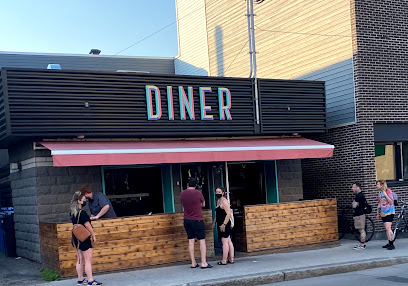
Quartier Général - Bar Spectacle - Wine Cocktails - Terrasse
Explore Quartier Général, a lively bar spectacle in Quebec City offering exquisite cocktails, live music, and a vibrant atmosphere for unforgettable nights.

Le Renard et la Chouette
Experience the finest in wine and cheese at Le Renard et la Chouette, a charming bistro in Quebec City offering an exquisite culinary journey.
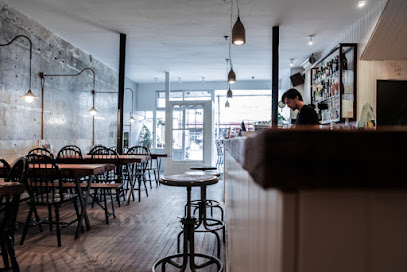
Taverne Jos Dion
Discover the vibrant atmosphere and local brews of Taverne Jos Dion, a charming bar and brewery in the heart of Québec City.

Bar Le Duck
Discover the warmth of Québec City at Bar Le Duck, where great drinks and friendly vibes come together for an unforgettable experience.
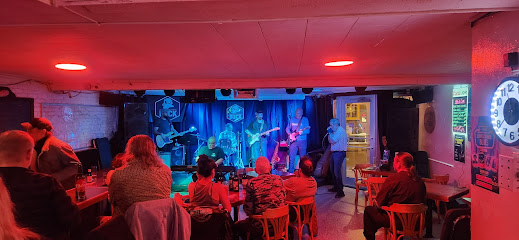
Chez Girard's Pub
Discover the local charm of Chez Girard's Pub in Québec City, where delightful food and drinks meet a vibrant atmosphere.

Red Lounge
Discover the vibrant nightlife of Québec City at Red Lounge, where eclectic cocktails meet a lively atmosphere in a stylish setting.

Siboire - Microbrasserie (Quartier Saint-Sauveur)
Experience the vibrant craft beer culture at Siboire - Microbrasserie in Quebec City, where artisanal brews and a warm atmosphere await.

Local Phrases
-
- HelloBonjour
[bon-zhoor] - GoodbyeAu revoir
[oh-re-vwar] - YesOui
[wee] - NoNon
[nohn] - Please/You're welcomeS'il vous plaît/De rien
[see voo pleh/duh ryen] - Thank youMerci
[mehr-see] - Excuse me/SorryExcusez-moi/Désolé
[ehk-skew-zay mwah/day-zoh-lay] - How are you?Comment ça va?
[koh-mohn sah vah] - Fine. And you?Bien. Et vous?
[byen. ay voo] - Do you speak English?Parlez-vous anglais?
[par-lay voo ahn-glay] - I don't understandJe ne comprends pas
[zhuh nuh kohm-prahn pah]
- HelloBonjour
-
- I'd like to see the menu, pleaseJe voudrais voir le menu, s'il vous plaît
[zhuh voo-dray vwahr luh meh-nyoo, see voo pleh] - I don't eat meatJe ne mange pas de viande
[zhuh nuh mahnj pah duh vyand] - Cheers!Santé!
[san-tay] - I would like to pay, pleaseJe voudrais payer, s'il vous plaît
[zhuh voo-dray pay-ay, see voo pleh]
- I'd like to see the menu, pleaseJe voudrais voir le menu, s'il vous plaît
-
- Help!Au secours!
[oh suh-koor] - Go away!Allez-vous-en!
[ah-lay voo zahn] - Call the Police!Appelez la police!
[ah-puh-lay lah poh-lees] - Call a doctor!Appelez un médecin!
[ah-puh-lay uh may-deh-sahn] - I'm lostJe suis perdu
[zhuh swee pair-doo] - I'm illJe suis malade
[zhuh swee mah-lahd]
- Help!Au secours!
-
- I'd like to buy...Je voudrais acheter...
[zhuh voo-dray zah-shay...] - I'm just lookingJe regarde juste
[zhuh ruh-gard zhewst] - How much is it?Combien ça coûte?
[kohm-byen sah koot] - That's too expensiveC'est trop cher
[say troh shair] - Can you lower the price?Pouvez-vous baisser le prix?
[poo-vez voo bay-say luh pree]
- I'd like to buy...Je voudrais acheter...
-
- What time is it?Quelle heure est-il?
[kel uhr ay-teel] - It's one o'clockIl est une heure
[eel ay tun uhr] - Half past (10)Dix et demi
[dee ay-dhuh mee] - MorningMatin
[mah-tahn] - AfternoonAprès-midi
[ah-pray mee-dee] - EveningSoir
[swahr] - YesterdayHier
[ee-air] - TodayAujourd'hui
[oh-zhoor-dwee] - TomorrowDemain
[duh-mahn] - 1Un
[uhn] - 2Deux
[duh] - 3Trois
[twah] - 4Quatre
[kah-truh] - 5Cinq
[sank] - 6Six
[sees] - 7Sept
[sept] - 8Huit
[wee-eet] - 9Neuf
[nurf] - 10Dix
[dee]
- What time is it?Quelle heure est-il?
-
- Where's a/the...?Où est...?
[oo ay...] - What's the address?Quelle est l'adresse?
[kel ay lah-dress] - Can you show me (on the map)?Pouvez-vous me montrer (sur la carte)?
[poo-vez voo muh mohn-tray (soor lah kart)] - When's the next (bus)?Quand est le prochain (bus)?
[kahn ay luh proh-shahn (boos)] - A ticket (to ....)Un billet (pour ....)
[uhn bee-yay (poor)]
- Where's a/the...?Où est...?
History of Saint-Sauveur
-
Saint-Sauveur, located just outside the fortified walls of Old Quebec, began as a working-class neighborhood in the 19th century. The area was primarily populated by Irish and French Canadian immigrants who were drawn to the burgeoning economy of Quebec City. The neighborhood's development was linked to the construction of the Limoilou and Saint-Sauveur railway lines, which facilitated transportation and trade.
-
The Church of Saint-Sauveur, built in the mid-19th century, became a cornerstone of the community, serving as a center for social and spiritual life. It reflects the architectural style of the period and highlights the importance of faith in the everyday lives of local residents. The church's establishment marked the growth of a vibrant community that offered both religious and cultural activities.
-
In the late 19th and early 20th centuries, Saint-Sauveur experienced significant industrial growth. Factories and workshops were established, providing employment for many residents. This era saw an influx of new immigrants, diversifying the neighborhood's cultural fabric. The industrial boom contributed to urbanization, altering the neighborhood's landscape with tenement housing and commercial establishments.
-
Throughout the 20th century, Saint-Sauveur faced challenges such as economic decline and urban decay. However, community efforts in the late 20th and early 21st centuries have led to a revitalization of the area, emphasizing cultural heritage and community engagement. Festivals, art initiatives, and local markets have reestablished Saint-Sauveur as a vibrant neighborhood within Quebec City.
-
Today, Saint-Sauveur is known for its diverse community and rich cultural offerings. It hosts various events that celebrate its heritage, including the Festival d'été de Québec and local art exhibitions. The neighborhood is characterized by a blend of historic architecture and modern developments, showcasing the evolution of Quebec City's socio-cultural landscape while maintaining its unique identity.
Saint-Sauveur Essentials
-
Saint-Sauveur is easily accessible from other neighborhoods in Quebec City. From Old Quebec, you can take a local bus (number 5) that runs frequently, taking approximately 15-20 minutes. Alternatively, taxis and rideshare services like Uber are available and provide a quick and direct route to the area.
-
Saint-Sauveur is a walkable neighborhood, making it easy to explore on foot. Local buses also serve the area, connecting you to other parts of Quebec City. For a more leisurely experience, consider renting a bicycle from one of the local rental shops. Cycling along the scenic streets can provide a unique perspective of the neighborhood.
-
Saint-Sauveur is generally a safe area for tourists, but it’s wise to remain vigilant. The areas near the main commercial streets are well-lit and frequented by visitors. Avoid poorly lit alleys or quiet streets at night. While there are no specific high-crime zones targeting tourists, petty theft can occur, so keep your belongings secure.
-
In case of an emergency, dial 911 for police, fire, or medical assistance. The local hospital and emergency services are situated nearby. It is advisable to have travel insurance that covers health emergencies. Pharmacies are also available in the area for minor health issues.
-
Fashion: Do dress comfortably for walking, and be mindful of the weather. Don’t wear overly revealing clothing when visiting local churches or religious sites. Religion: Do respect local customs and traditions. Don’t engage in loud conversations in sacred spaces. Public Transport: Do offer your seat to the elderly. Don’t eat or drink on public transport. Greetings: Do greet locals with a friendly 'Bonjour.' Don’t assume that everyone speaks English; a few words of French can go a long way. Eating & Drinking: Do try the local cuisine at the many cafés and restaurants. Don’t waste food; it’s considered impolite to leave a lot on your plate.
-
To experience Saint-Sauveur like a local, visit the neighborhood's farmers' market on weekends for fresh produce and artisan goods. Engage with local shopkeepers and ask for recommendations on hidden gems in the area. Don't miss the chance to enjoy a coffee at one of the quaint cafés while people-watching. Additionally, check local event calendars for festivals and cultural events that may be happening during your visit.
Nearby Cities to Saint-Sauveur
-
Things To Do in Halifax
-
Things To Do in Montreal
-
Things To Do in Waterville
-
Things To Do in Stowe
-
Things To Do in Bangor
-
Things To Do in Augusta
-
Things To Do in Burlington
-
Things To Do in Montpelier
-
Things To Do in Lewiston
-
Things To Do in Camden
-
Things To Do in Brunswick
-
Things To Do in Rockland
-
Things To Do in Middlebury
-
Things To Do in Lake Placid
-
Things To Do in Hanover








